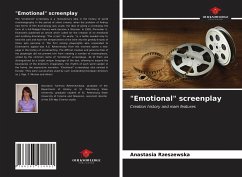The "emotional" screenplay is a revolutionary idea in the history of world cinematography. In the period of silent cinema, when the problem of finding new forms of film dramaturgy was acute, the idea of giving a screenplay the form of a full-fledged literary work became a lifesaver. In 1928, filmmaker S. Eisenstein published an article which called for the creation of an emotional and scathing dramaturgy. "The script," he wrote, "is a bottle needed only to blow the cork and foam the temperament of the wine into the greedy throats of those who perceive it. The first among playwrights who responded to Eisenstein's appeal was A.G. Rzheshevsky. From this moment opens a new page in the history of screenwriting. The difficult creative and personal fate of the playwright did not prevent him from creating a number of masterpieces, united by the common name of "emotional" screenplays. All of them are distinguished by a bright unique language of the text, allowing to expand the boundaries of the director's imagination, the rhythm of each word spoken in the frame, the expressive narration. "Emotional" screenplays also existed in Europe. They were successfully used by such outstanding European directors as J. Vigo, F. Murnau and others.
Hinweis: Dieser Artikel kann nur an eine deutsche Lieferadresse ausgeliefert werden.
Hinweis: Dieser Artikel kann nur an eine deutsche Lieferadresse ausgeliefert werden.








